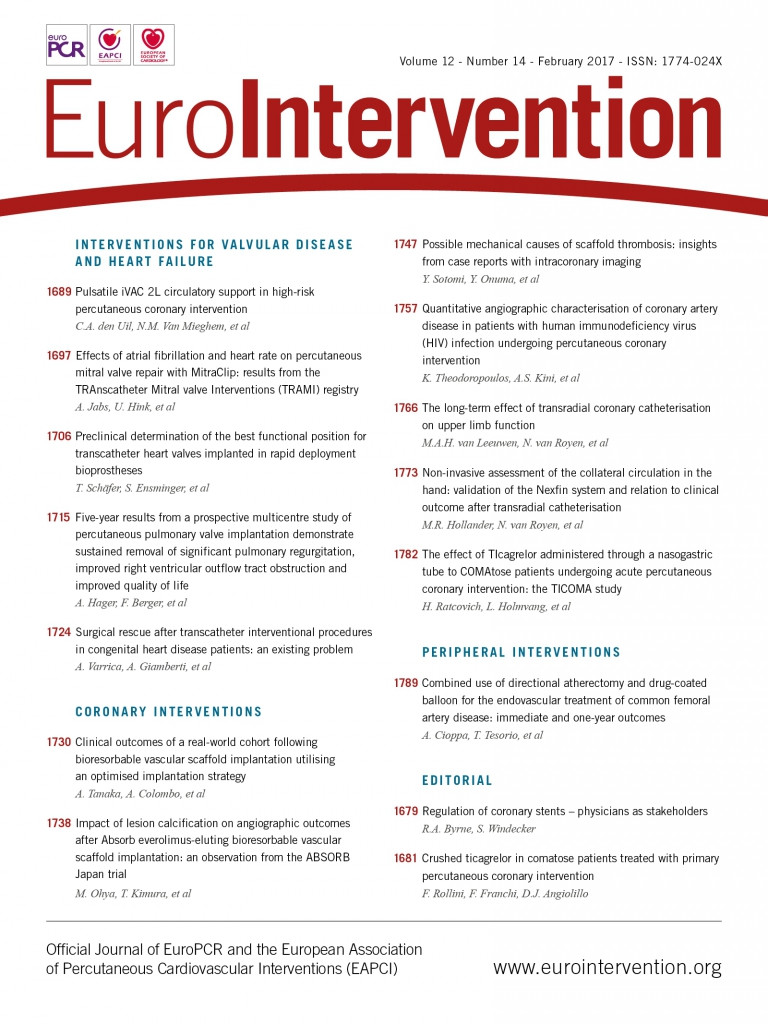
When it comes to medical devices, patients in Europe have usually had earlier access and greater choice than their counterparts in the United States of America and Japan. In many circumstances, the early adoption of novel technologies in Europe – such as transcatheter aortic valve implantation1 – can contribute to significant reductions in morbidity and mortality. On the other hand, device approval is granted based on less extensive clinical evidence than is required in other jurisdictions (although recent legislative changes in the USA, for example, suggest that this difference may change in the future2). This means that widespread clinical use of new devices often precedes clear proof of clinical effectiveness and/or advantage over existing devices. As a result, patients may be exposed to unexpected safety issues which frequently only emerge in the setting of so-called off-label use3.
In contradistinction to the regulation of pharmaceutical products, which is supervised by a central agency known as the European Medicines Agency, the regulation of medical devices in Europe is the responsibility of individual national authorities –known as Competent Authorities– in member states of the European Union (EU) and affiliated countries. Non-active medical devices are regulated by these agencies in line with a harmonised EU Directive on Medical Devices from 1993, which was modified in 20074. These directives are complemented by non-binding guidance documents known as MEDDEV documents, which suggest a common approach to be followed by manufacturers and evaluators of such devices; for example, MEDDEV 2.7/1 provides guidance on requirements for clinical evaluation of medical devices5. Interestingly, device-specific MEDDEV guidance documents exist for only one type of medical device, namely coronary stents, which are dealt with in a dedicated appendix of MEDDEV 2.7/16.
High-risk devices – such as implantable devices, including coronary stents and heart valves – require detailed independent testing (known as conformity assessment) prior to approval for general use. This testing is evaluated by independent organisations known as Notified Bodies that oblige manufacturers to demonstrate that their devices comply with the requirements of the Directive on Medical Devices. Ultimately, devices deemed to be compliant receive approval for use in Europe and may have the CE mark affixed to the product.
Medical device regulation in Europe is in a state of transition at present7. Public concern emerged in relation to a number of cases in recent years, most notably in 2010 after it was discovered that a French manufacturer of breast implants had been using cheap industrial-grade silicone rather than medical-grade product. Although this was, in essence, a case of fraud, a subsequent legal judgement found that the German Notified Body had approved the implants without sufficient inspection and quality control, and was liable for damages. A critique of the current regulatory processes has identified a number of problems including insufficient requirements for clinical data, lack of transparency and accountability in relation to decisions of Notified Bodies, and insufficient use of expert medical advice8. Against this background, the European Commission, which had already initiated the process to review existing legislation, announced an action plan in 2012 to tighten controls, and ensure full and stringent implementation of the current laws. Important developments that are currently underway include legislative reform through an overhaul of the Directives on Medical Devices9, increasing scrutiny of Notified Bodies and more active engagement of expert medical advice.
In 2013, in a new departure, the European Commission asked physician stakeholders to compile evidence for a revision of the existing MEDDEV advisory document on the evaluation of coronary stents6. This approach was made through the ESC, who delegated the task to the EAPCI with the request to establish an advisory group in the field of percutaneous coronary intervention with specific expertise in the evaluation of coronary artery stents. It was the mission of the ESC-EAPCI Task Force to ensure the priority of patient safety and to protect patients from exposure to incompletely evaluated devices or devices with incomplete evidence of benefit while preserving expeditious access to innovative and novel devices that will improve patient care through better outcomes.
During the drafting of its report, the ESC-EAPCI Task Force engaged several stakeholders to obtain additional information, including a representative of European medical device manufacturers (Eucomed) and consultants to the US Food and Drug Administration who are expert in United States approval processes. As part of its work, the Task Force conducted a systematic review of available evidence with coronary stents, incorporating data from a total of 158 randomised trials. The data analysis showed that current-generation coronary stents are a mature, safe and effective technology with reproducible results, which permit potential comparison of new devices against established benchmark rates10. Accordingly, it proposed that, in order to expedite the evaluation of new stents, objective performance criteria (OPC) might be used for early phase single-arm clinical trials. This might lead to conditional approval. However, the device manufacturer would be mandated to initiate, conduct and complete a compulsory randomised clinical trial powered for clinical endpoints within 36 months. If the novel device meets the pre-specified primary endpoint outcome (typically at one year), long-term follow-up of the entire cohort up to five years is evaluated, at which time unconditional approval is granted. Alternatively, approval for use is withdrawn. The Task Force presented its report to a committee of the Medical Device Experts Group of the European Commission in Brussels in 2015 and published an executive summary in the peer-reviewed literature10.
Following publication of the report, preparation of the revised guidance document was delegated to the medical device unit of the Joint Research Centre (JRC) –the science and knowledge service of the European Commission– and dialogue was instituted between the Task Force and the JRC. The aim of this dialogue is to identify how best to apply the evidence and recommendations of the Task Force in revised formal guidance documents. Moreover, arising from these discussions, in 2016 the Task Force was asked to prepare an additional report on the class of devices known as bioresorbable scaffolds and work on this is currently in progress.
The reform of medical device regulation in Europe is gathering momentum and has important implications for patients, physicians and manufacturers alike. In relation to interventions for cardiovascular disease, the ESC and its constituent associations including the EAPCI have an important role in ensuring that appropriate regulation and legislation are in place to ensure that European patients continue to have timely access to safe and efficacious medical devices. Thorough scientific evaluation should not delay but rather result in more timely access to approval and reimbursement. It is to be hoped that the recommendations of the Task Force on the evaluation of coronary stents will play an important role in the formation of new device-specific guidance documents on the evaluation of coronary stents. More importantly, perhaps, it is hoped that this pilot project can serve as a model for future collaborations between regulators and physicians in a variety of areas of cardiovascular intervention.
Future endeavours initiated by the ESC will focus on increased provision of expert independent advice to the European Commission, collaborative projects on post-marketing surveillance of new medical devices and evaluation of novel valve technologies, and active engagement with Health Technology Assessment agencies, whose analyses form an important part of decision making in relation to reimbursement and coverage for novel medical devices. This work will be coordinated by the ESC Advocacy Committee led by Peter Kearney and the EU Regulatory Affairs Committee chaired by Alan Fraser.
For many years, physicians have had a “hands off” approach to the regulation of medical devices, leaving important decisions on legislation and approval processes almost exclusively in the hands of other stakeholders. The ongoing changes in device regulation in Europe offer exciting new opportunities for the more active participation of physicians in the shaping of regulatory landscapes. Although physicians, by the nature of their education, lack dedicated training in regulatory issues, the perspectives provided as patient advocates, end-users and clinical investigators surely constitute critical input for a well-functioning medical device regulatory system.

